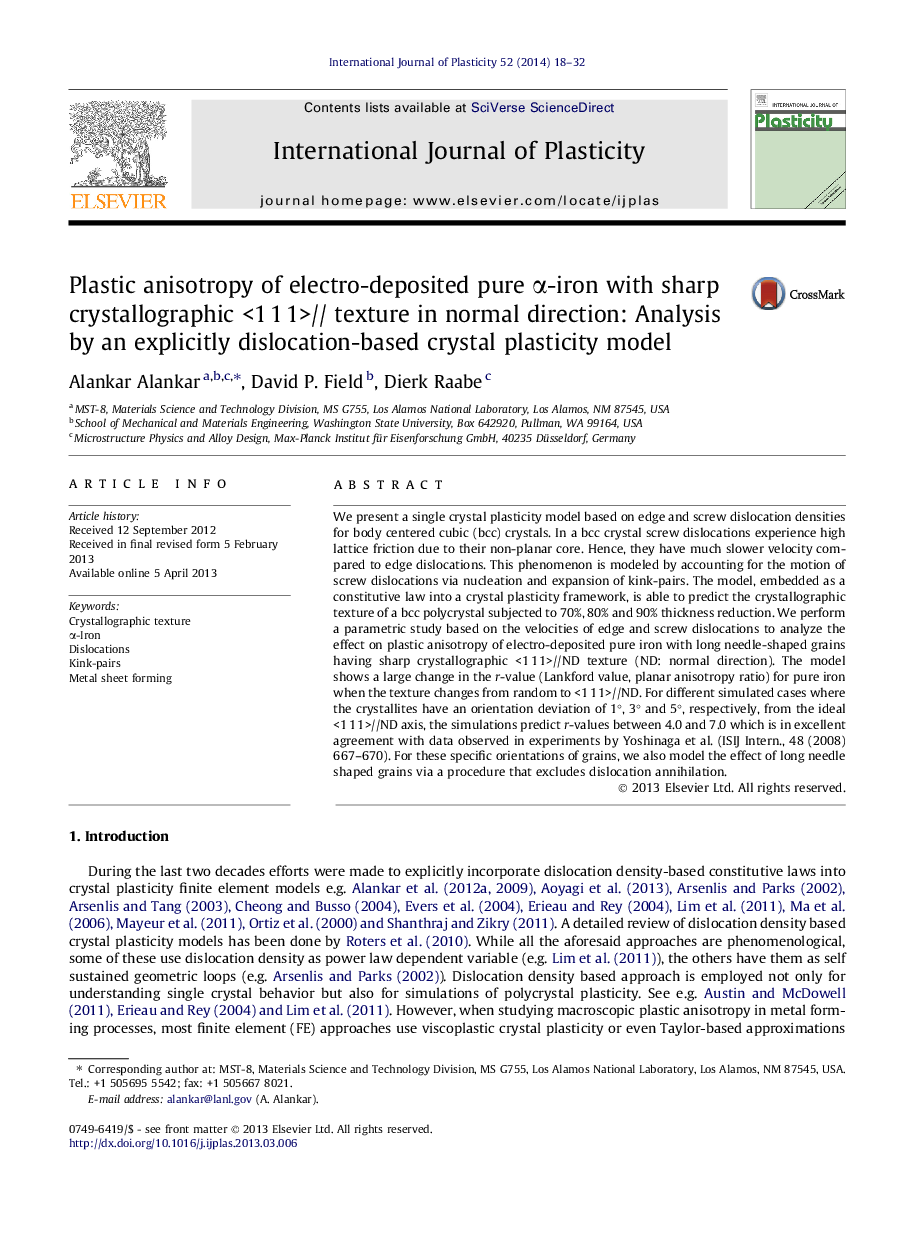| کد مقاله | کد نشریه | سال انتشار | مقاله انگلیسی | نسخه تمام متن |
|---|---|---|---|---|
| 786819 | 1465621 | 2014 | 15 صفحه PDF | دانلود رایگان |

• A crystal plasticity finite element model (CPFEM) for bcc single crystals.
• Incorporation of the different velocities of edge and screw dislocations.
• Effect of dislocation velocities on formability of electrodeposited α-iron sheet.
• Improved understanding of metal forming process based on dislocation theory.
We present a single crystal plasticity model based on edge and screw dislocation densities for body centered cubic (bcc) crystals. In a bcc crystal screw dislocations experience high lattice friction due to their non-planar core. Hence, they have much slower velocity compared to edge dislocations. This phenomenon is modeled by accounting for the motion of screw dislocations via nucleation and expansion of kink-pairs. The model, embedded as a constitutive law into a crystal plasticity framework, is able to predict the crystallographic texture of a bcc polycrystal subjected to 70%, 80% and 90% thickness reduction. We perform a parametric study based on the velocities of edge and screw dislocations to analyze the effect on plastic anisotropy of electro-deposited pure iron with long needle-shaped grains having sharp crystallographic <1 1 1>//ND texture (ND: normal direction). The model shows a large change in the r-value (Lankford value, planar anisotropy ratio) for pure iron when the texture changes from random to <1 1 1>//ND. For different simulated cases where the crystallites have an orientation deviation of 1°, 3° and 5°, respectively, from the ideal <1 1 1>//ND axis, the simulations predict r-values between 4.0 and 7.0 which is in excellent agreement with data observed in experiments by Yoshinaga et al. (ISIJ Intern., 48 (2008) 667–670). For these specific orientations of grains, we also model the effect of long needle shaped grains via a procedure that excludes dislocation annihilation.
Journal: International Journal of Plasticity - Volume 52, January 2014, Pages 18–32